Sustainable energy systems final review
1/208
There's no tags or description
Looks like no tags are added yet.
Name | Mastery | Learn | Test | Matching | Spaced |
|---|
No study sessions yet.
209 Terms
What is energy?
Energy is the ability to do work or cause change. It can be stored (potential energy) or in motion (kinetic energy). It can exist in many forms, such as heat, light, motion, or electrical energy
What is power?
Power is the rate at which energy is used or transferred. It is calculated as Energy divided by Time (Power = Energy/Time).
What are the SI units for energy and power?
Energy: Joule (J)
Power: Watt (W), which is 1 Joule per second (J/s).
What is the relationship between energy and power?
Energy is the total amount of work done, while power is how fast that energy is used or generated over time.
What is the First Law of Thermodynamics?
Also called the Law of Conservation of Energy, it states that energy cannot be created or destroyed, only transferred or transformed.
What is the Second Law of Thermodynamics?
It states that energy conversions are not completely efficient. Some energy is always lost as heat or other unusable forms, and entropy (disorder) always increases.
What is entropy?
Entropy is a measure of disorder or randomness in a system. In energy terms, it refers to energy that is not available for doing useful work.
What are SI units?
SI units are the International System of Units, the standard measurement system for science, including meters (m), kilograms (kg), seconds (s), Joules (J), and Watts (W).
What are SI multipliers?
SI multipliers are prefixes used to represent large or small values easily. Examples: kilo- (1,000), mega- (1,000,000), and giga- (1,000,000,000).
Q: What is efficiency in energy systems?
A: Efficiency is the percentage of input energy that is converted to useful output energy. It reflects how well an energy conversion process works.
What is a kilowatt-hour (kWh)?
A kilowatt-hour is a unit of energy equal to using 1 kilowatt (1,000 Watts) of power for 1 hour.
What does the term "efficiency" mean in energy systems?
Efficiency is the ratio of useful energy output to the total energy input, expressed as a percentage.
What is the Law of Conservation of Energy?
It is the principle that energy cannot be created or destroyed, only converted from one form to another.
Q: Roughly what percentage of society's energy needs were met by fossil fuels in 1970 and today?
1970: ~85% of energy needs were supplied by fossil fuels.
Today: Fossil fuels still supply ~80% of society's energy needs.
Where is energy demand expected to grow in the coming decades?
Energy demand will grow most in emerging economies such as: (Non-OECDand other developing nations)
China
India (fastest-growing demand)
Indonesia
Pakistan
Nigeria
Brazil
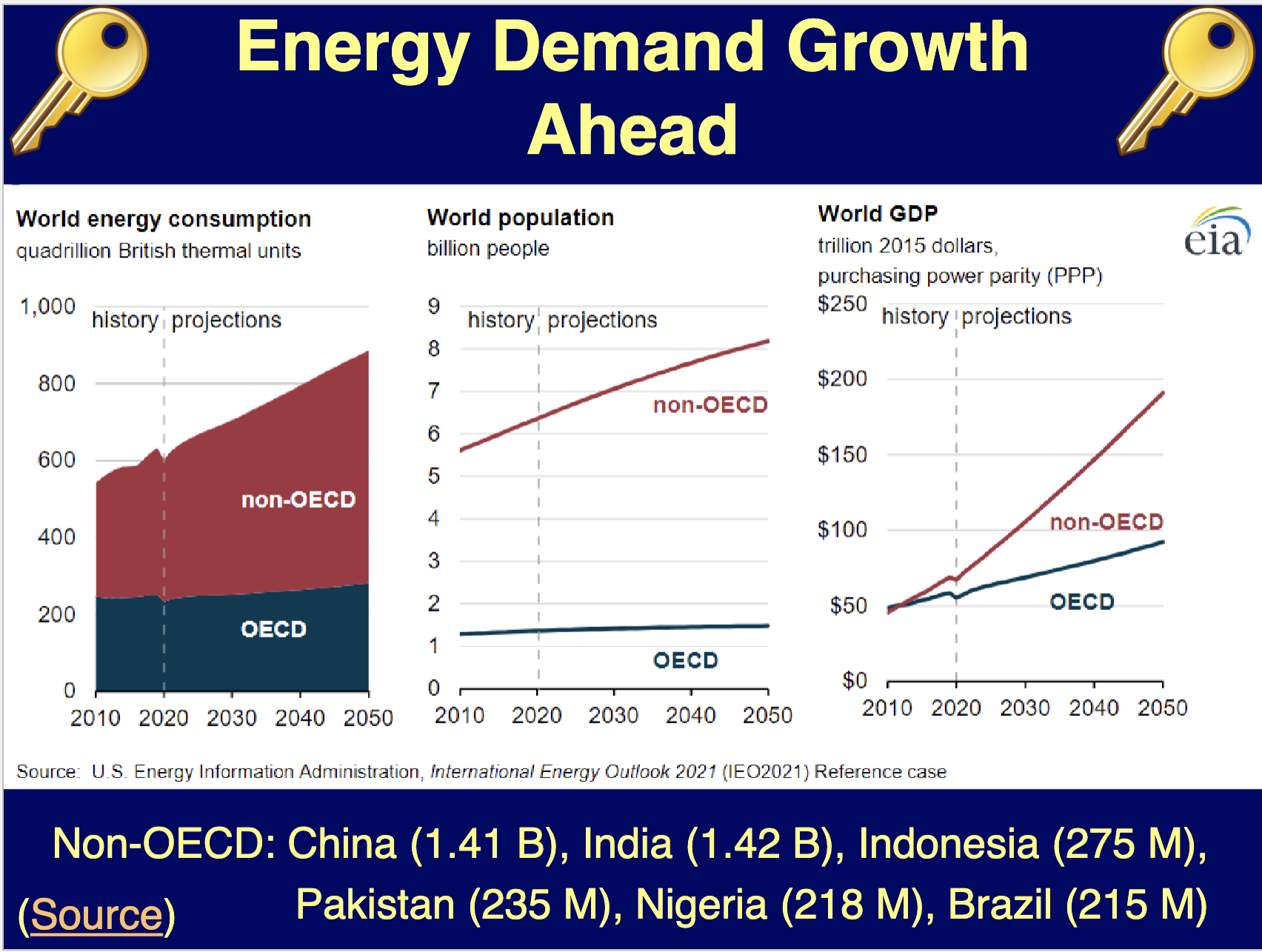
What and where are the Permian Basin, the Bakken Formation, and the Marcellus Shale?
Permian Basin: Located in West Texas and southeastern New Mexico, known for its vast oil and natural gas reserves.
Bakken Formation: Found in North Dakota, Montana, and parts of Canada, rich in shale oil.
Marcellus Shale: Located in the Appalachian Basin (Pennsylvania, West Virginia, Ohio, and New York), a major natural gas source.
Which continent has the greatest estimated renewable energy supply, and what is the most plentiful source?
Continent: Africa
Most plentiful source: Solar energy, due to high solar insolation across the continent.

What are the key components (boxes) in the energy systems key image?
Primary Energy Source: The raw energy forms found in nature (e.g., oil, coal, wind).
Acquisition: The process of extracting or collecting energy resources (e.g., mining, drilling).
Generation: Conversion of primary energy into usable forms (e.g., power plants).
Transmission: Movement of energy from production sites to distribution centers (e.g., power lines, pipelines).
Distribution: Delivery of energy to end users (e.g., electricity grids, gas utilities).
Storage: Temporary holding of energy for later use (e.g., batteries, tank farms).
Human Consumption: Final use of energy by individuals or industries.
What are the names of the four energy end-use sectors (TICR)?
Transportation
Industry
Commercial Buildings
Residential Buildings
Roughly, what percentage of energy is currently wasted in human energy systems?
Approximately 67% of energy is wasted due to inefficiencies in energy conversion and usage.
How do available solar energy and current total human consumption compare?
Available Solar Energy: The Sun delivers 5.1 to 3.6 million quads of energy annually to the Earth.
Human Consumption: Humans consume only ~570 quads annually, meaning we use just 0.01% - 0.02% of the Sun's energy.
What are the top five primary energy-consuming countries today (in order)?
China
United States
India
Russia
Japan
56% of global consumption
How does population growth drive energy demand?
Population growth in developing countries contributes to increased energy demand due to:
Greater energy access.
Rapidly growing populations.
Economic development and prosperity goals that aim to match those of developed countries.
What are the categories listed in the planetary boundaries key image?
Climate change
Biodiversity loss
Biogeochemical flows (nitrogen and phosphorus cycles)
Land-system change
Ocean acidification
Freshwater use
Atmospheric aerosol loading
Introduction of novel entities (e.g., plastics, chemicals)
Stratospheric ozone depletion
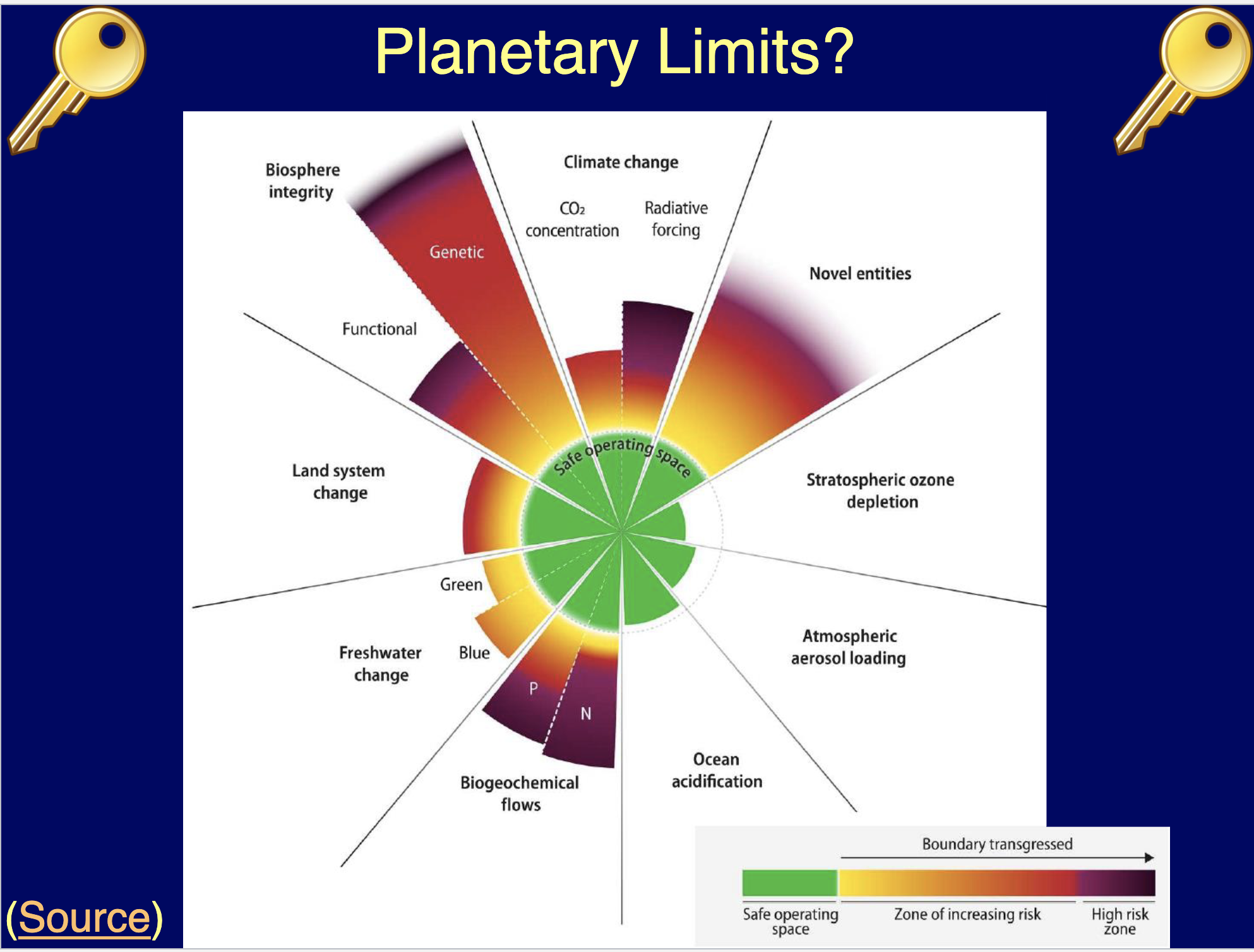
What are the naturally occurring and anthropogenic greenhouse gases?
Naturally occurring:
Carbon dioxide (CO2)
Methane (CH4)
Nitrous oxide (N2O)
Water vapor (H2O)
Ozone (O3)
Anthropogenic (human-made):
Fluorinated gases like HFCs, PFCs, and SF6
How are emissions categorized into Scope 1, Scope 2, and Scope 3?
Scope 1: Direct emissions from owned/controlled sources (e.g., burning fuel on-site).
Scope 2: Indirect emissions from purchased energy (e.g., electricity, steam).
Scope 3: Other indirect emissions (e.g., supply chain, business travel, waste disposal).
What are the IPCC and COP, and what are their roles?
IPCC (Intergovernmental Panel on Climate Change): Established in 1988 to provide scientific assessments on climate change and its impacts. Publishes reports used to guide global policy.
COP (Conference of the Parties): Decision-making body of the UN Framework Convention on Climate Change, where nations negotiate and set climate goals (e.g., Paris Agreement).
What is the current concentration of carbon dioxide in our atmosphere?
Approximately 420–425 ppm as of 2024.
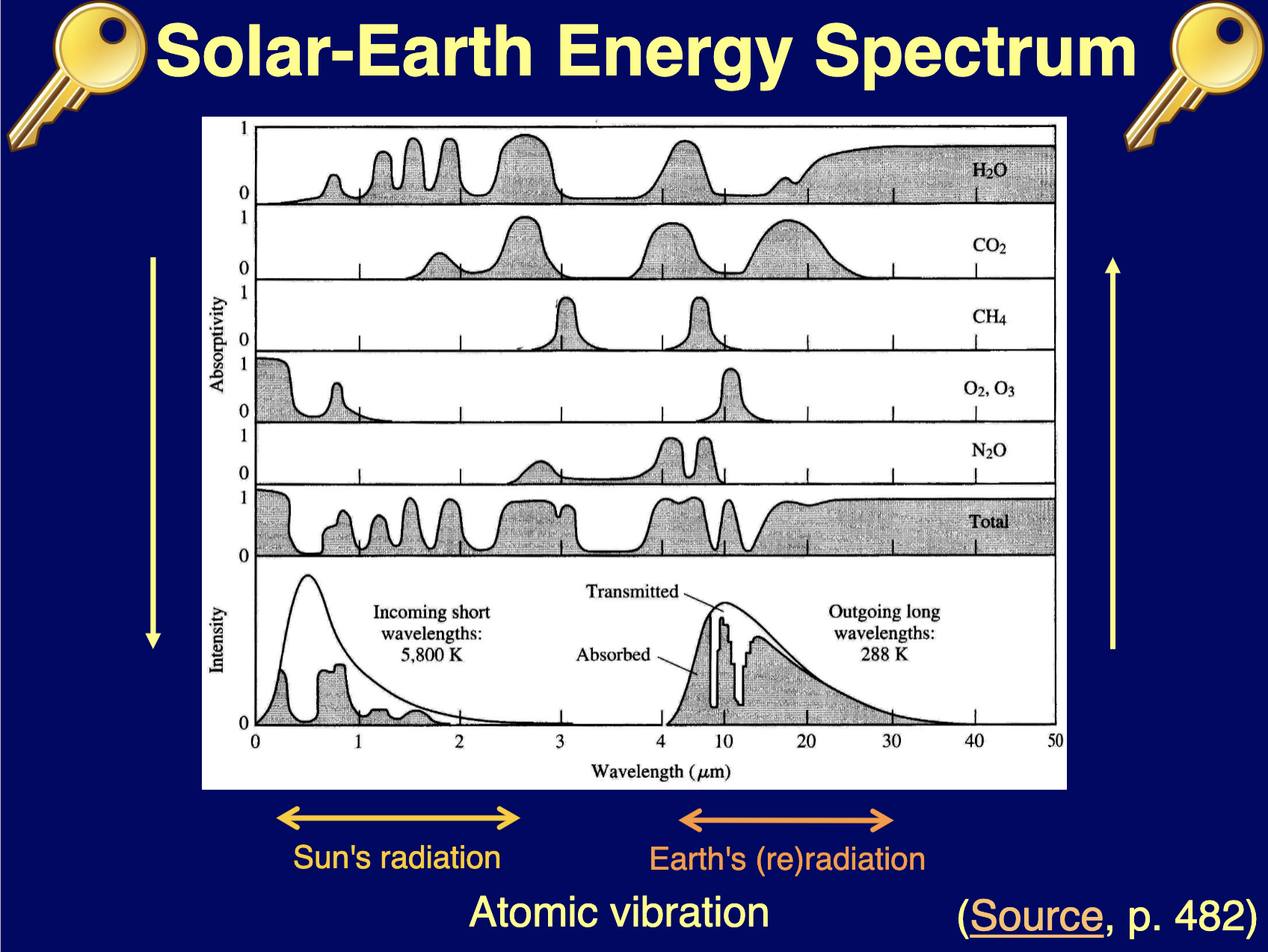
What does the Solar-Earth Energy Spectrum key image represent?
It shows how solar energy (shortwave radiation) enters Earth’s atmosphere and is absorbed or reflected. Earth re-radiates energy as longwave radiation (infrared), which interacts with greenhouse gases.
If global warming is occurring, what does that say about the energy balance in our atmosphere?
Global warming indicates an imbalance where more energy enters Earth’s system than exits, primarily due to greenhouse gases trapping outgoing longwave radiation.
How do greenhouse gases "work," and when do they interact with solar energy?
Greenhouse gases trap outgoing infrared radiation (heat) rather than blocking incoming solar radiation.
Sunlight reaches Earth as shortwave photons. After absorption by Earth's surface, energy is re-radiated as longwave photons, which are trapped by greenhouse gases like CO2, CH4, and H2O, causing warming.
What are the major gases/molecules that absorb the Sun’s and Earth’s radiation?
Water vapor (H2O)
Carbon dioxide (CO2)
Methane (CH4)
Oxygen (O2)/Ozone (O3)
Compared to pre-industrial temperature averages, how much have current average surface temperatures increased?
Current average surface temperatures have risen by 1.2–1.4°C compared to pre-industrial levels.
To hold global average temperature rise to 1.5°C, what emissions targets must the world meet?
2030: Reduce emissions by 45% from 2010 levels (to ~18.2 Gt CO2).
2050: Achieve net zero emissions.
To hold global average temperature rise to 2.0°C, what emissions targets must the world meet?
2030: Reduce emissions by 20% from 2010 levels (to ~26.5 Gt CO2).
2075: Achieve net zero emissions.
What percentage of coral reefs are threatened with destruction under 2.0°C warming scenarios?
Over 99% of coral reefs are at risk of destruction under 2.0°C warming.
What percentage of global warming heat is absorbed by our oceans?
Approximately 90% of global warming heat is absorbed by oceans.
How are hurricanes changing due to global warming?
High confidence: Higher storm surges, increased storm intensity.
Medium confidence: More Category 4 and 5 hurricanes, increased precipitation rates.
Some confidence: Increased likelihood of rapid intensification (wind speed increasing by >35 mph within 24 hours).
No evidence: Hurricanes are becoming more frequent.
What is happening to rainfall trends in the mid-Atlantic and northeastern U.S.?
Rainfall in these regions is becoming heavier and more frequent, leading to increased flooding risks.
What are the basic chemical formulas for major fossil fuels?
Coal: Primarily carbon (C), with variable amounts of H, O, N, and S.
Natural Gas (Methane): CH4
Gasoline (a hydrocarbon mix): C4H10 to C12H26
How do fossil fuel-based power generation stations contribute to global warming?
Fossil fuels are burned, releasing CO2 (a greenhouse gas) and heat.
Example: Combustion reactions release carbon dioxide and water:
Natural gas (CH4): CH4 + 2O2 → CO2 + 2H2O
Coal (C): C + O2 → CO2
What are important sources of methane (natural and anthropogenic)?
Natural sources: Wetlands, natural gas seepage.
Anthropogenic sources: Livestock digestion, rice paddies, landfills, fossil fuel production (e.g., leaks and flaring).
What is the top driver of tropical deforestation?
The expansion of agricultural land, particularly for livestock grazing and crop production like soy and palm oil, is the primary driver of tropical deforestation.
How do SOx (sulfur oxides) and NOx (nitrogen oxides) contribute to acid rain?
SOx and NOx react with water vapor, oxygen, and other chemicals in the atmosphere to form sulfuric acid (H2SO4) and nitric acid (HNO3), which fall as acid rain. This damages ecosystems, buildings, and water quality.
What is PM2.5, and why is it harmful?
PM2.5 refers to particulate matter with a diameter less than 2.5 microns.
These fine particles can penetrate deep into the lungs and bloodstream, causing respiratory, cardiovascular, and other health problems.
How does the indoor use of traditional biofuels harm human health?
Burning biofuels (e.g., wood, dung, crop residues) for cooking releases harmful pollutants like carbon monoxide, black carbon, and PM2.5.
Health Impacts: Causes respiratory diseases, heart problems, and premature deaths, especially in households without proper ventilation.
What is redlining, and how does it intersect with climate change to create compound risks?
Redlining: A historic practice where areas, often inhabited by people of color, were denied investment or loans.
Compound Risks:
Redlined areas tend to lack green spaces and have more heat-absorbing infrastructure, causing urban heat islands.
Residents face higher risks of heat-related illnesses and poor air quality due to climate change.
What is the compound risk of climate change and labor discrimination for coal miners?
Health Impacts: Many coal miners suffer from black lung disease (caused by silica dust exposure).
Prevention: The risks were known, but inadequate regulation and enforcement allowed dangerous conditions to persist. Improved protective measures and stricter regulations could have mitigated the harm.
What is the time value of money?
Money available today is worth more than the same amount in the future due to its earning potential.
What is net present value (NPV)?
NPV is the current value of future cash inflows and outflows, discounted at a required rate of return, minus the initial investment.
What is the relationship between NPV and LCOE (Levelized Cost of energy)?
LCOE is calculated by setting NPV = 0, meaning revenues equal expenses over the project’s lifetime.
What is the formula for LCOE, and what are its typical units?
r: Discount rate.
ttt: Year of the project lifecycle.
Typical Units:
$/MWh or ¢/kWh.

How do solar and wind generation costs compare today vs. 2009–2010?
Today, solar and wind generation costs are significantly lower and often less expensive than fossil fuels. Costs have dropped dramatically since 2009–2010 due to technological advances and economies of scale.
How does electricity storage impact the cost competitiveness of solar and wind?
The cost of electricity storage increases overall project costs for solar and wind, which are variable energy sources, reducing their competitiveness compared to dispatchable sources.
What is an integrated assessment model (IAM)?
IAMs link climate, economic, and social models to calculate impacts like the social cost of carbon (SCC).
What is the updated SCC estimate from November 2023?
The "mainline" SCC is $190/ton of CO2, reflecting the long-term economic impacts of carbon emissions.
Compare and contrast a carbon tax and cap-and-trade program.
Carbon Tax: Sets a price on carbon emissions, providing certainty in cost but uncertainty in emissions reduction.
Cap-and-Trade: Limits (caps) emissions and allows trading of allowances, providing certainty in emissions but fluctuating costs.
What is the difference between cap-and-trade and cap-and-invest?
Cap-and-Trade: Focuses on reducing emissions by trading allowances.
Cap-and-Invest: Similar but directs proceeds toward clean energy projects and community investments.
What are the different classifications of investors?
Institutional investors: Pension funds, insurance companies, mutual funds.
Public investors: Governments or state agencies.
Individual investors: Private citizens or venture capitalists.
Development banks: Financial institutions supporting investment in developing countries
Why does a rapid clean energy transition threaten existing fossil fuel assets?
Fossil fuel assets may become stranded assets, suffering devaluation as demand shifts to renewables. New fossil fuel investments may not provide long-term returns.
What are C-PACE and green banks, and how do they finance clean energy?
C-PACE: Secures loans with a lien on the property, repaid through property taxes.
Green Banks: Public-private partnerships providing loans and equity for clean energy projects.
How does a fossil fuel facility shutdown affect communities?
Small-town economies reliant on fossil fuel jobs face economic devastation, necessitating a just transition to provide alternative jobs and investments.
What is the difference between just transition and environmental justice?
Just Transition: Ensures workers and communities are not left behind in the energy shift.
Environmental Justice: Ensures all people have equal rights to live in safe, healthy environments.
Why is employment in the transportation sector at risk?
The transition to sustainable energy (e.g., EVs) reduces jobs in traditional vehicle manufacturing and maintenance, requiring reskilling and job reallocation.
What is the state of renewable energy investment in Africa?
Africa received only 0.6% of global renewable investment in 2021, limiting labor and prosperity growth. Political instability and financial barriers hinder investment.
What is the difference between a constitutional republic and a federal government?
Constitutional Republic: Democratic elections governed by rule of law.
Federal Government: Power shared across national, state, and local levels.
What are the roles of the three branches of the U.S. government?
Legislative: Creates laws.
Executive: Administers and enforces laws.
Judicial: Interprets laws and ensures they align with the Constitution.
What is the Commerce Clause in the U.S. Constitution?
Grants Congress the power to regulate commerce with foreign nations, between states, and with Native American tribes.
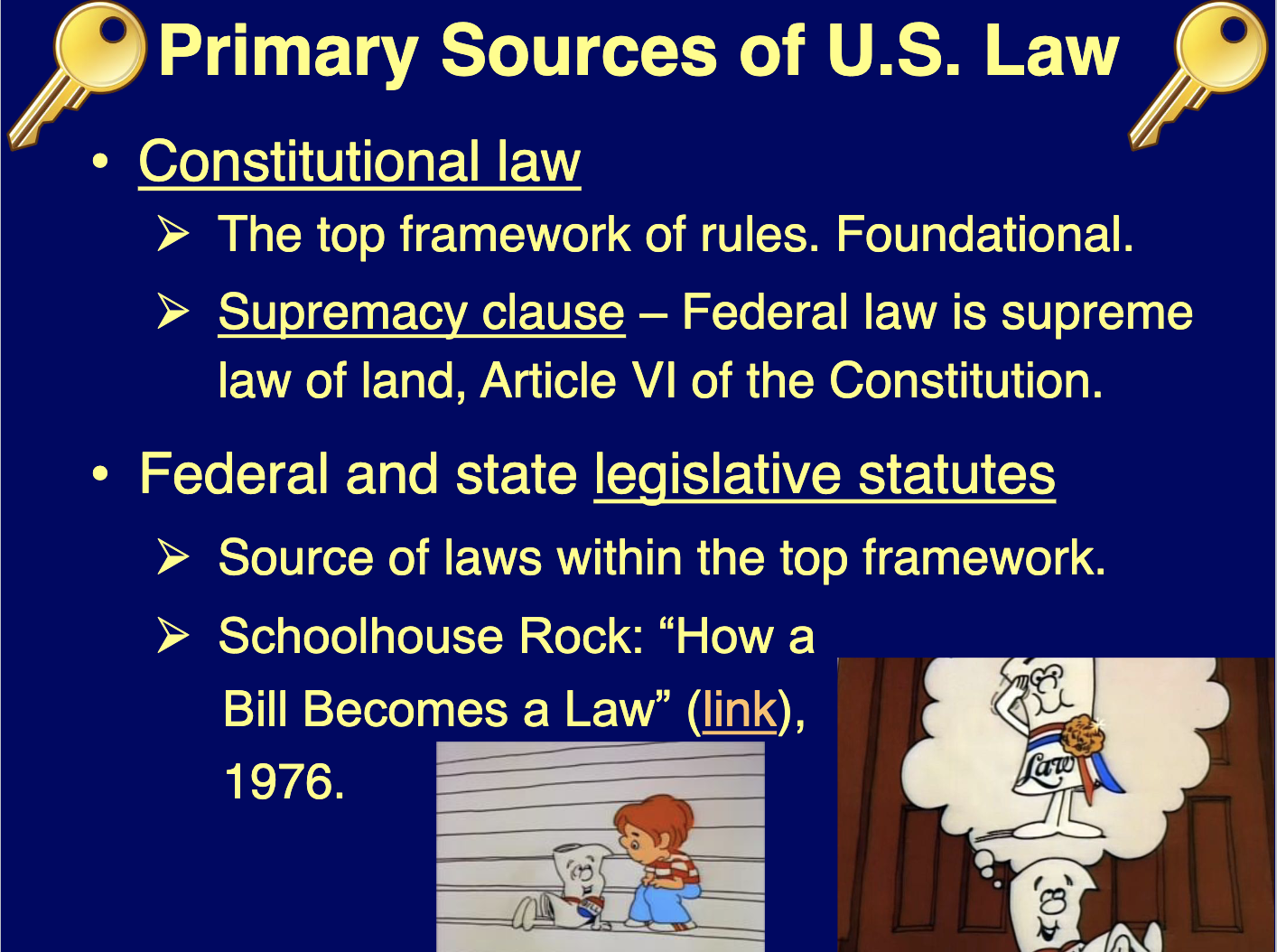
What are the four primary sources of law in the United States?
Constitutional law: Foundational legal framework.
Legislative statutes: Laws passed by Congress or state legislatures.
Administrative rules: Issued by executive agencies to implement laws.
Case law: Legal interpretations from court rulings.
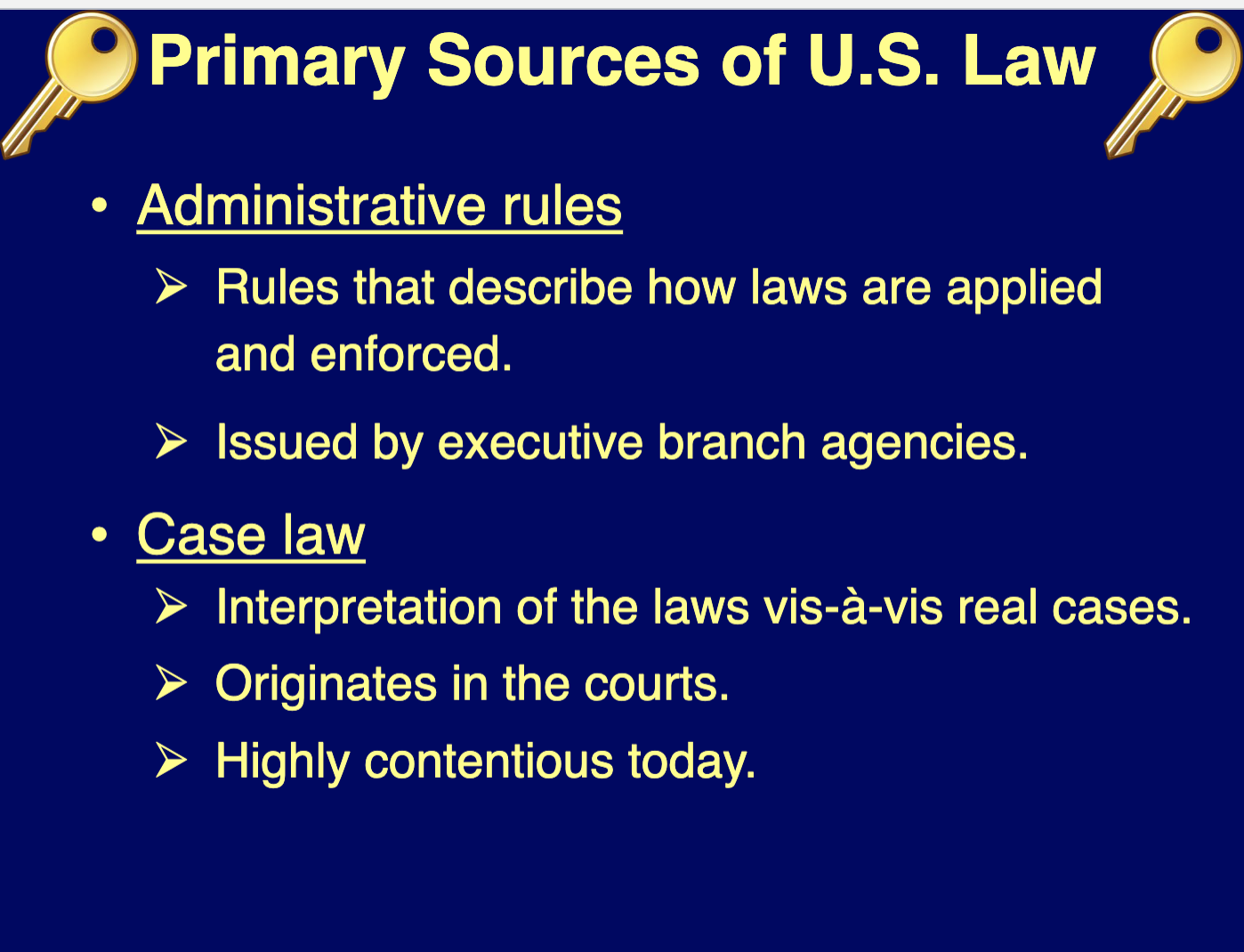
How do liberal and conservative ideologies differ on government power?
Liberals: Support regulation, strong federal government, and equity.
Conservatives: Prefer market-driven solutions, states’ rights, and individual responsibility
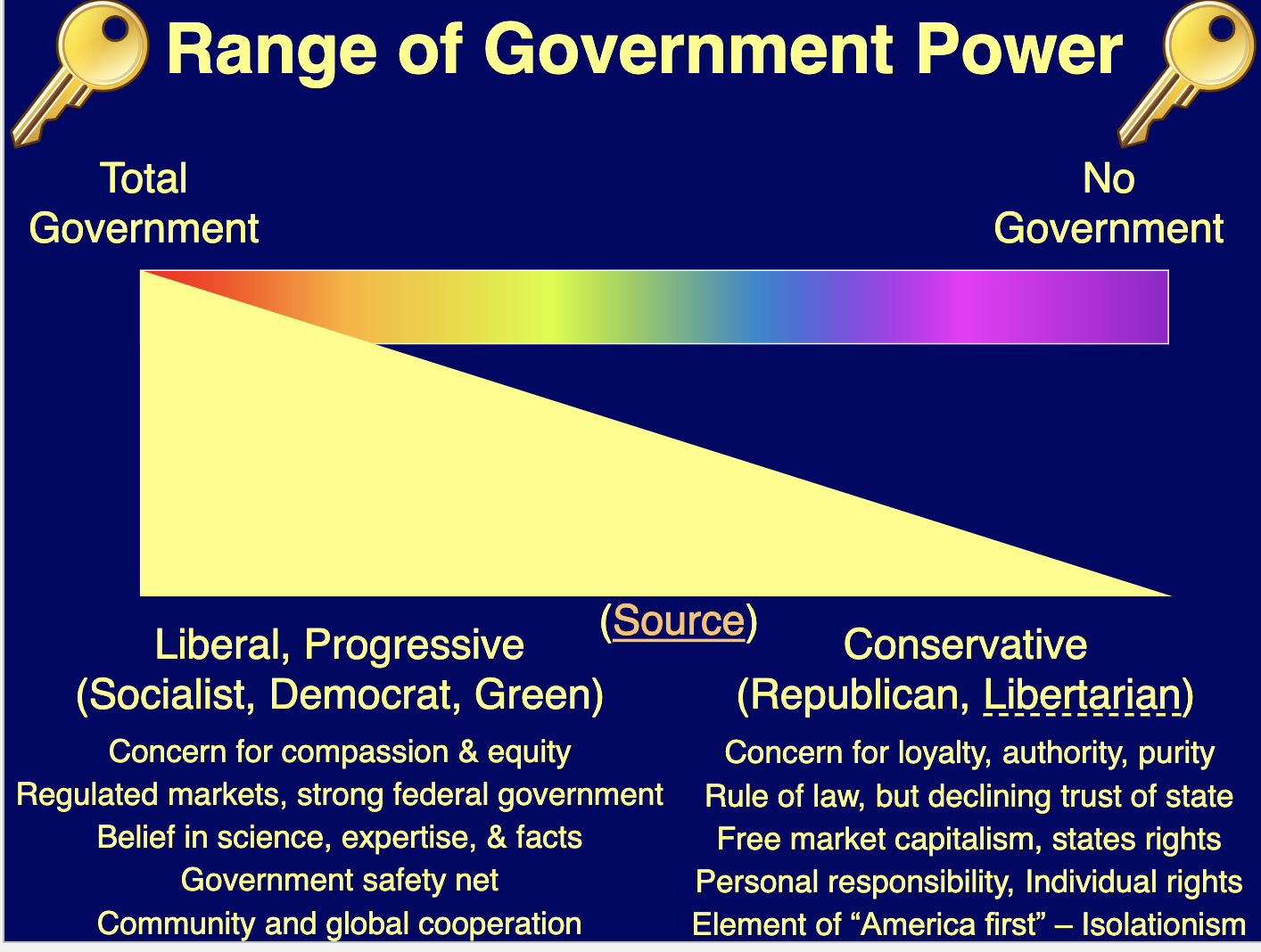
What type of government is employed by the five largest energy-consuming nations?
China: Oligarchy/Autocracy
United States: Federal Republic
India: Federal Republic
Russia: Oligarchy/Autocracy
Japan: Unitary Republic
What is the difference between an oligarchy and a constitutional republic?
Oligarchy: Small group holds power.
Constitutional Republic: Power distributed through democratic elections and guided by rule of law.
What are the six categories of energy policy instruments?
Regulations: Mandatory standards (e.g., vehicle emissions).
Quantity Standards: Renewable portfolio standards (RPS).
Public Procurement: Government mandates for green purchasing.
Price Instruments: Subsidies, carbon taxes, cap-and-trade.
Technology RD&D: Investment in research and development.
Information Gathering/Sharing: Providing data and education

Carbon taxes and cap-and-trade programs represent what type of policy?
Price Instruments.
What historical events led to major U.S. environmental laws in 1970?
1940s Los Angeles smog crises and public awareness from environmental movements like Earth Day (1970).
What are the three primary goals of the 1970 Clean Air Act (CAA)?
Protect public health.
Regulate air emissions from stationary and mobile sources.
Establish national air quality standards
What was the outcome of Massachusetts v. EPA (2007)?
The Supreme Court ruled that the EPA can regulate greenhouse gases (GHGs) as air pollutants if they endanger human health.
What is the endangerment finding, and how does it relate to the Clean Air Act?
A 2009 EPA determination that GHGs endanger public health, providing a legal basis to regulate GHGs under the CAA.
What drives China's strong position in the clean energy field?
Leader: Largest producer and installer of renewables, motivated by energy security and economic growth.
Laggard: High GHG emissions due to coal dependency
Why do many white evangelical Christians doubt climate change?
Opposition to progressive political figures and belief that climate science challenges their worldview.
What are the recommended steps to counter misinformation?
Provide clear alternatives, avoid repeating falsehoods, and affirm shared values. Focus on positive and simple messaging.
What is the "magic number" behind successful protests?
Campaigns are successful when more than 3.5% of the population participates.
What are the 3 P’s of personal activism?
Personal: Lifestyle changes (diet, shopping).
Professional: Career aligned with sustainability.
Public: Engage politically and share knowledge
What was the core argument in Juliana v. U.S., and why did it fail?
Argument: The U.S. government failed to protect youth from climate change.
Failure: Lacked standing, specifically the ability to prove redressability (whether courts could fix the harm).
What was the decision in Held v. Montana?
Montana youth successfully argued that state policies violated their right to a clean environment, marking a landmark case in climate litigation.
Why is increasing the percentage of electricity advantageous for sustainable energy systems?
Electricity use emits no air pollutants, and electrification combined with clean primary energy sources (wind, solar, etc.) can reduce emissions significantly.
Electrification of devices (e.g., electric vehicles) achieves much higher energy efficiency than fossil fuel-based systems
What does the key image on U.S. energy flows indicate about energy efficiency?
Two-thirds of the energy consumed in the U.S. is wasted due to inefficiencies, highlighting a huge potential for energy efficiency improvements
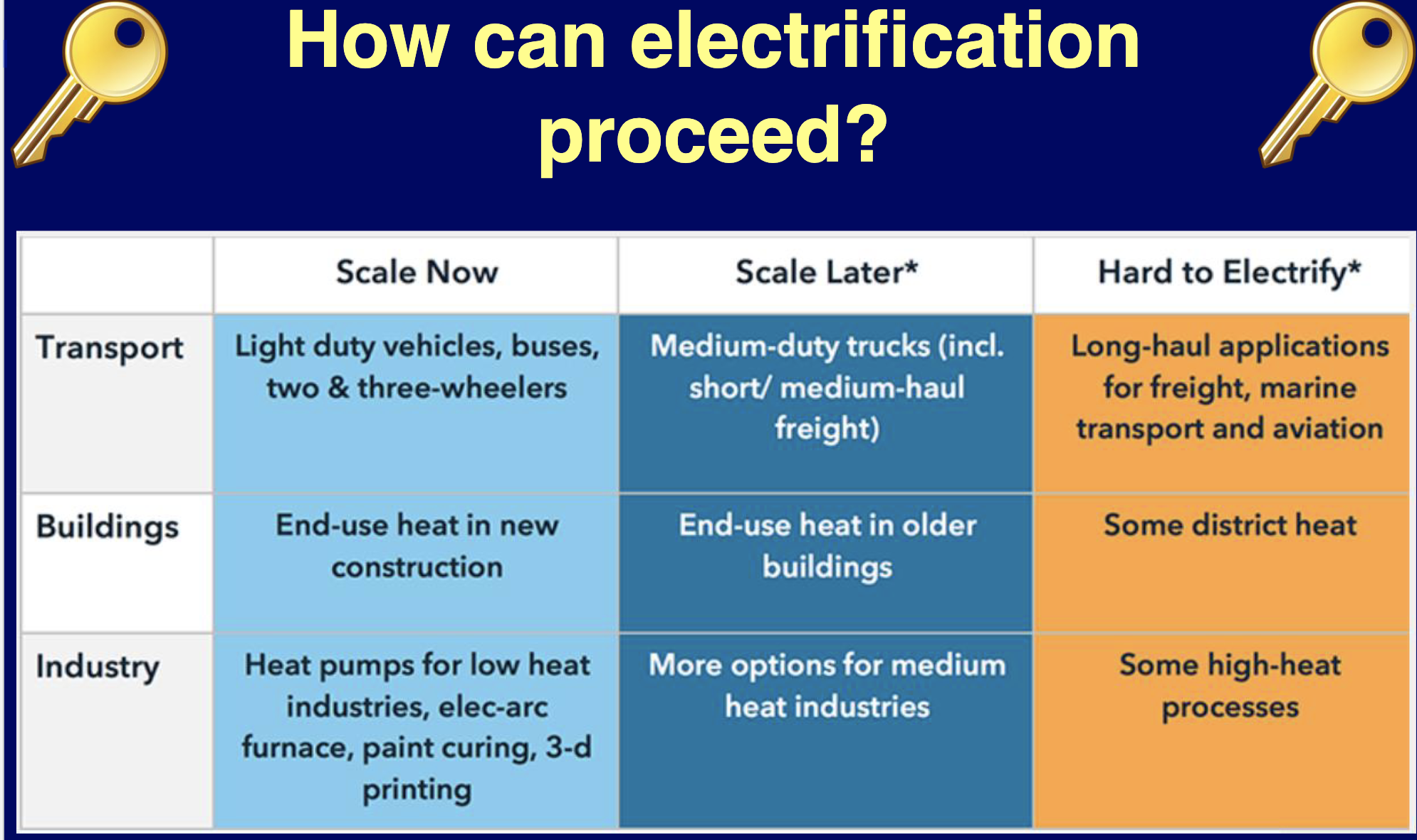
Which sectors of energy use can be electrified now, and which are "hard to electrify"?
Can be electrified now: Residential heating, passenger vehicles, small commercial buildings.
Hard to electrify: Heavy industry, aviation, shipping
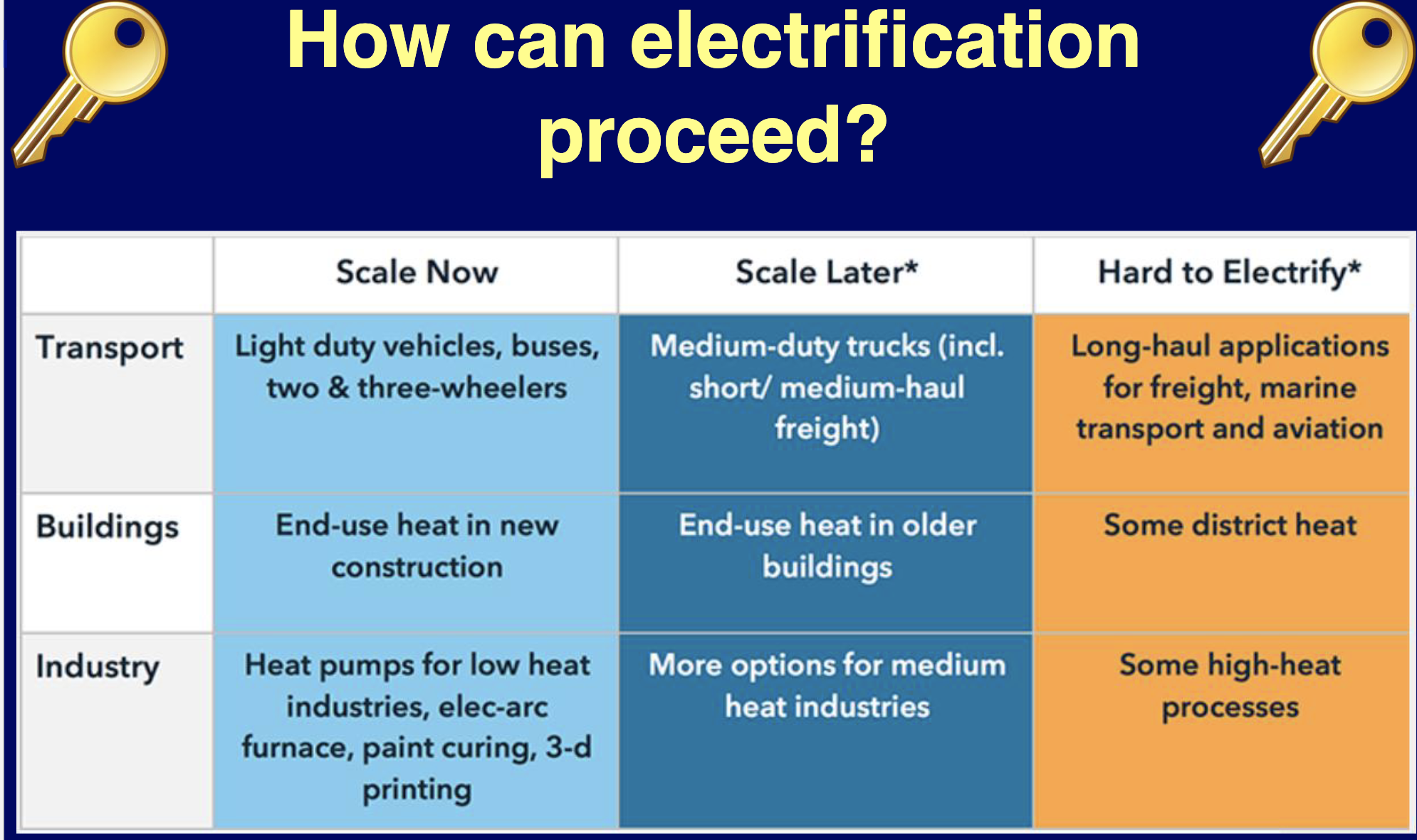
What is the formula for electrical power, and what do current and voltage represent?
Formula: P = I x V (Power = Current x Voltage).
Current (I): Flow of electrons (amps).
Voltage (V): Electrical potential energy per charge (volts)
What is the difference between alternating current (AC) and direct current (DC)?
DC: Current flows in one direction, used in batteries and solar cells.
AC: Current reverses direction at 50/60 Hz, used in household and industrial power systems.
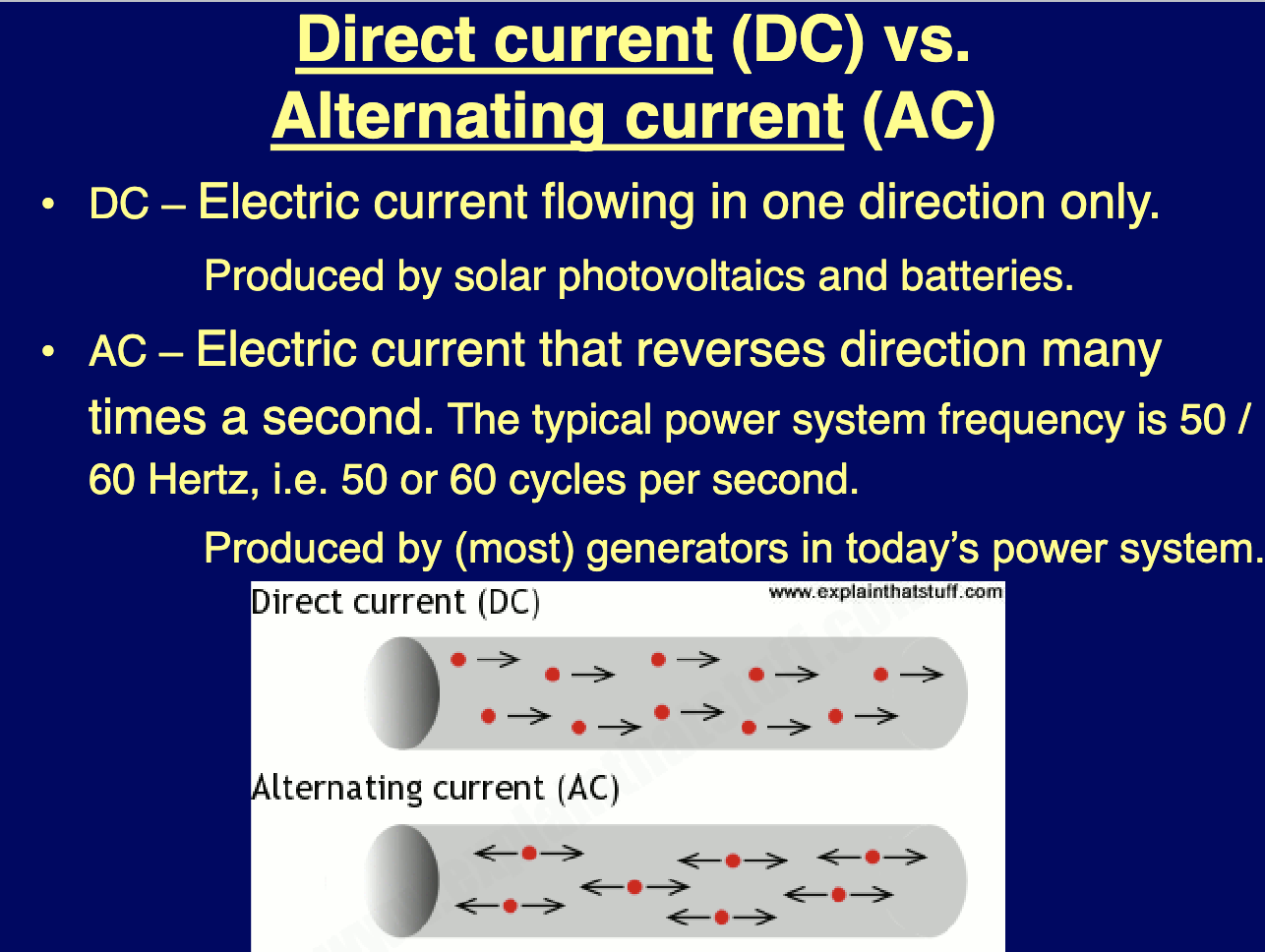
What voltage and current levels are dangerous to humans?
Dangerous levels: Above 30 volts and 17 milliamps (0.017 A) can interrupt heart rhythm.
Voltage increases the chance of current penetrating the skin, and higher current through the chest poses greater risks
How does electromagnetic induction work in an electric generator?
A moving magnet creates a variable magnetic field around a coil, inducing voltage and current.
Key components:
Magnet: Creates a magnetic field.
Coil of wire: Interacts with the field to generate voltage.
Motion: Drives the interaction between the magnet and wire
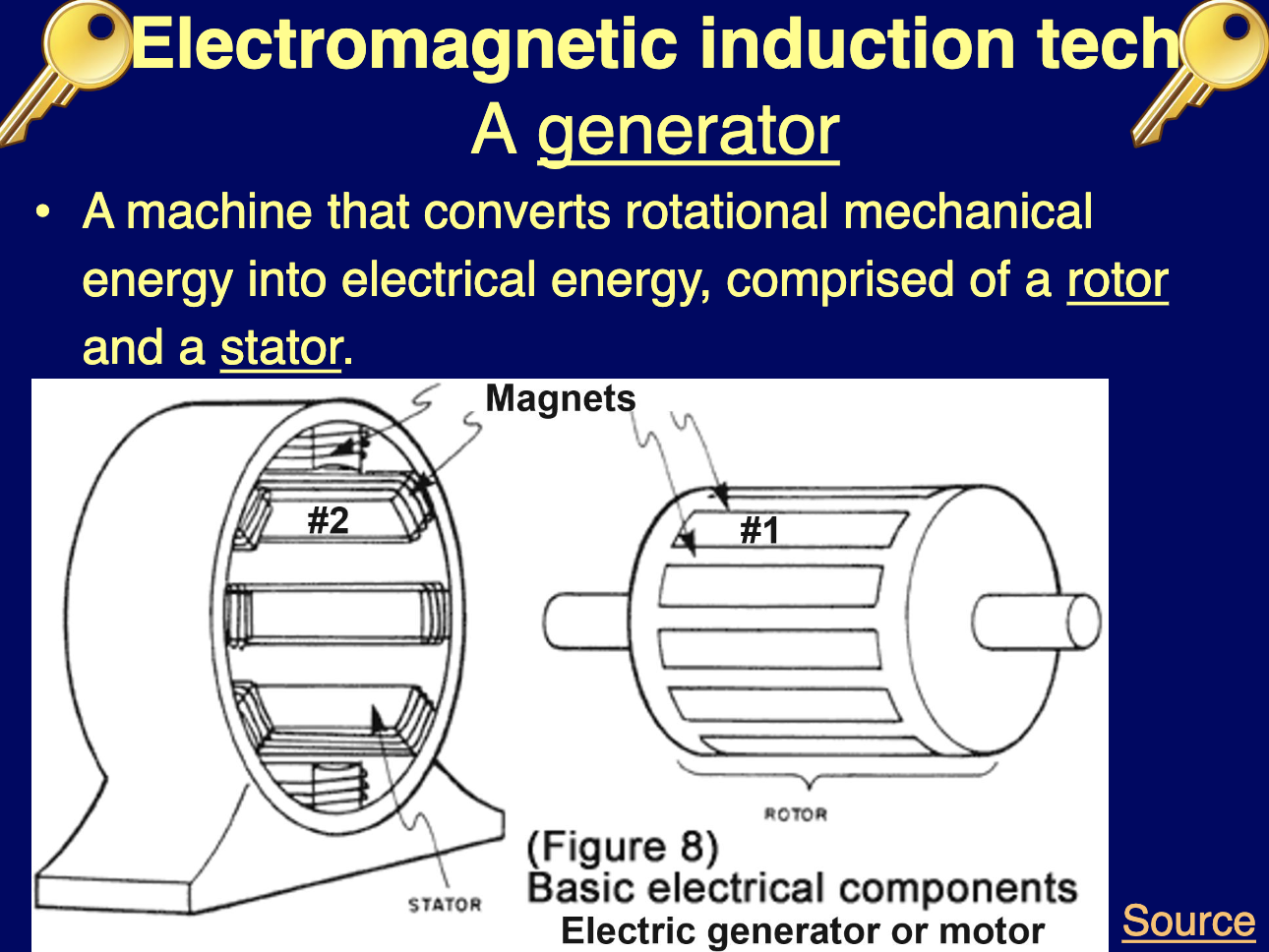
What is the relationship between an electric motor and an electric generator?
Both use electromagnetic induction.
Generator: Converts mechanical energy into electrical energy.
Motor: Converts electrical energy into mechanical energy
How does an AC transformer work, and what is the difference between step-up and step-down transformers?
AC transformer: Uses electromagnetic induction to change voltage levels.
Step-up: Increases voltage, decreases current.
Step-down: Decreases voltage, increases current
How does the photovoltaic effect generate electricity in solar cells?
Photons (light particles) are absorbed, exciting electrons in a silicon-based p-n junction.
The electric field at the junction drives electrons to flow, creating direct current (DC) electricity
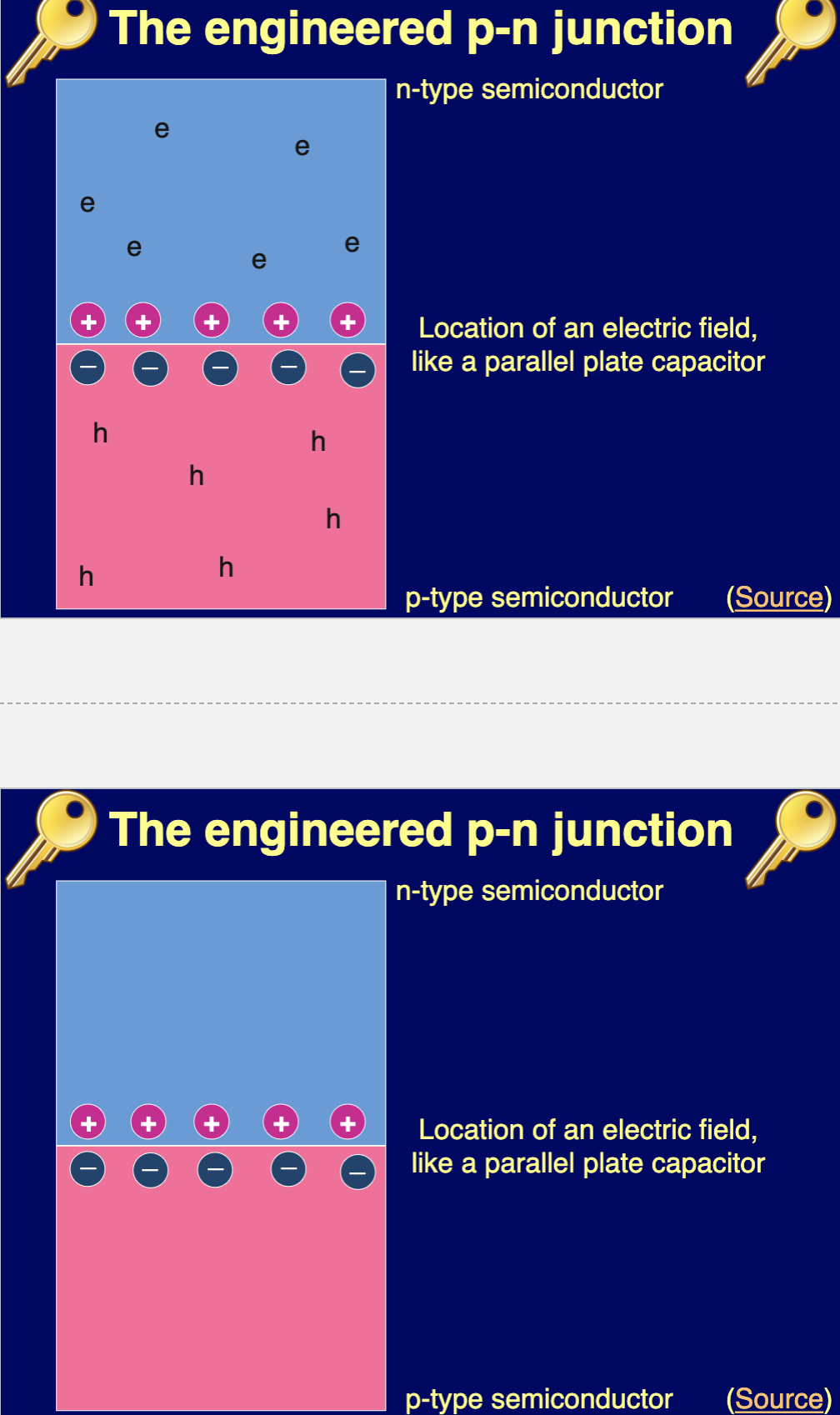
What are the essential parts of a rechargeable battery, and how does it work?
Parts:
Electrodes: Graphite (anode) and mixed metal oxide (cathode).
Electrolyte: Allows ion movement.
Separator: Prevents electron flow but permits ion flow.
How it works:
Charging: Electrons and lithium ions are pushed to the graphite electrode.
Discharging: Ions and electrons flow from the graphite to the mixed metal oxide electrode
What are the functions of a turbine, generator, and transformer in electricity generation?
Turbine: Converts linear fluid flow (e.g., steam, water, gas) into rotary motion.
Generator: Converts rotary motion into electricity using electromagnetic induction.
Transformer: Adjusts voltage levels for efficient transmission and safe distribution.
In which form is electricity most often transmitted through today’s grid, and why?
Alternating Current (AC): AC is favored because its voltage can be easily transformed for efficient long-distance transmission and safe local distribution
What form of electricity is preferred for a next-generation sustainable grid?
Direct Current (DC): DC is preferred for ultrahigh-voltage transmission due to lower energy losses over long distances
Which power plants traditionally support base load and peak load?
Base load: Coal and nuclear plants due to their steady output and long ramp times.
Peak load: Natural gas and hydro plants due to their fast ramp-up times